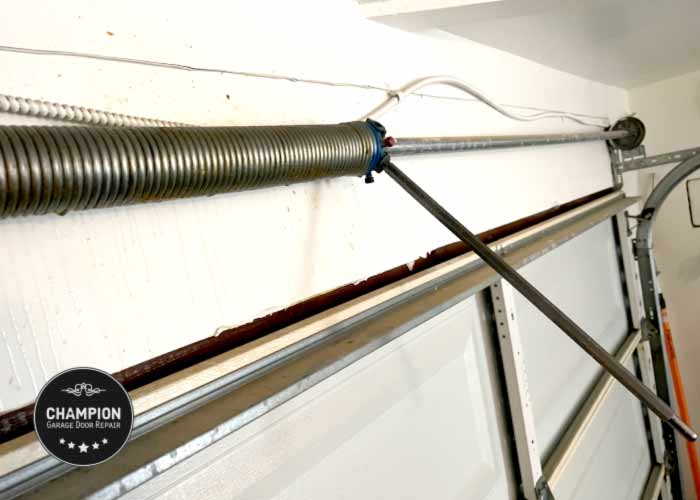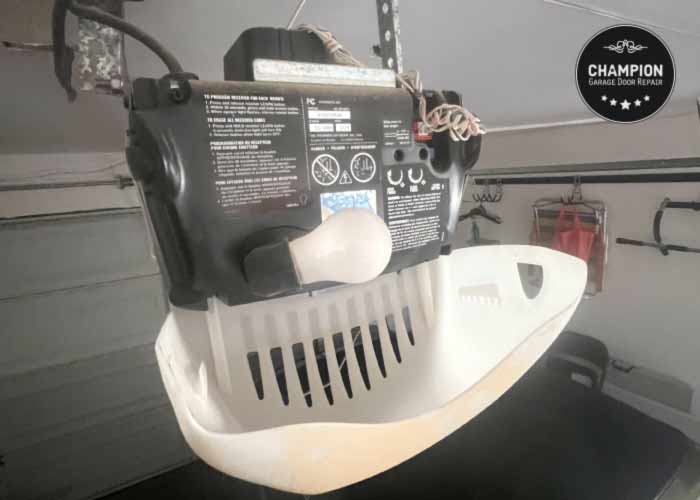While modern garage doors are built to be more durable and reliable than their predecessors, even with regular maintenance they may still break down from time to time. Often, we encounter bigger repair projects that require more attention and expertise. In this article, we will dive into one of our recent projects of garage door repair in Fullerton, California, where we tackled problems with a client’s garage door and restored the equipment to its former glory. We will take you through the entire process, from diagnosis to repair, and give you a glimpse into the world of garage door repair. Our goal is to provide insight into the complexities of repairing garage doors, openers, and springs, and highlight the importance of relying on a licensed garage door repair service.
Phase 1 – diagnosing defective remote controls
The client’s requested a service due to remote controls that wouldn’t work. When a remote isn’t working properly, it could indicate several different problems, depending on the symptoms that the overhead door system exhibits. For instance, if the garage door making a clicking sound but doesn’t start, it could be due to issues with the motor’s transformer. Alternatively, it could be a frequency interference problem, defective receiver, motherboard or safety devices. If the remote’s led light doesn’t turn on, the issue could be related to the battery or to the remote itself. Therefore, a proper diagnosis is required to pinpoint the exact cause of the issue and determine the appropriate course of action.
During the diagnosis phase of the repair project, the client’s garage door opener wasn’t showing any error codes, which made the problem a little bit more complex to diagnose. The responding technician used the Champion’s latest diagnostic techniques to identify the root cause of the problem. We performed a thorough inspection of the garage door, door opener, and other components, looking for any signs of wear and damage. We also performed a series of tests to determine the exact nature of the issue and ensure that our diagnosis was accurate.
This stage is critical as it provides us with the information needed to develop an effective repair plan. We use proper diagnostic methods, manufacturer recommended procedures, and equipment to ensure accurate and precise diagnosis of the problems at hand, reducing the risk of performing unnecessary repairs, and time-consuming rework.
With our diagnosis complete, we were able to determine that the opener’s sensors were defective and proceeded with the replacement work.

Phase 2 – preventing breakdowns and damage
While working on diagnosing the issue, we also thoroughly inspect other components of the garage door that may be causing or affected by the problem. This helps us identify any other potential issues and address them proactively to prevent future breakdowns.
By taking these steps, the responding technician was able to detect that the client’s garage door wasn’t balanced properly, and conclude that the torsion springs generate the wrong torque output. A door that isn’t balanced properly would cause issues with the opener’s safety devices, gears and sprockets, door cables, rollers, and could cause the garage door to come off the tracks.
Given the circumstances, the client chose to replace the spring, which was more than 7 years old. Since the garage door was heavier than normal, we weighed the door and calculated its properties to find more appropriate springs. This enabled us to minimize the risk of future breakdowns and ensure that the garage door performs optimally for the long term.

Phase 3 – fine tune and recalibration
Recalibrating the motor torque is a crucial step in any spring replacement project or in any repair project that involves adjusting the spring’s torque output. It involves adjusting the amount of torque produced by the opener’s electric motor to optimize performance, improve efficiency and prevent error codes. It is important that this task will be performed by a certified technician with experience in recalibrating motor torque, as an improperly calibrated motor can lead to decreased performance, hazardous operating conditions and even damage to the garage door. A professional technician can also help ensure that the opener’s motor is calibrated to meet the manufacturer’s specifications and comply with industry safety regulations.

Final thoughts
Having your garage door repair projects performed and completed by a licensed garage door repair company is crucial for ensuring the safety and longevity of your garage doors, openers and springs. Whether it’s a routine maintenance task or a major repair, a skilled and experienced technician can diagnose issues correctly, recommend the appropriate course of action, and use their expertise and training to efficiently and effectively complete the project.







